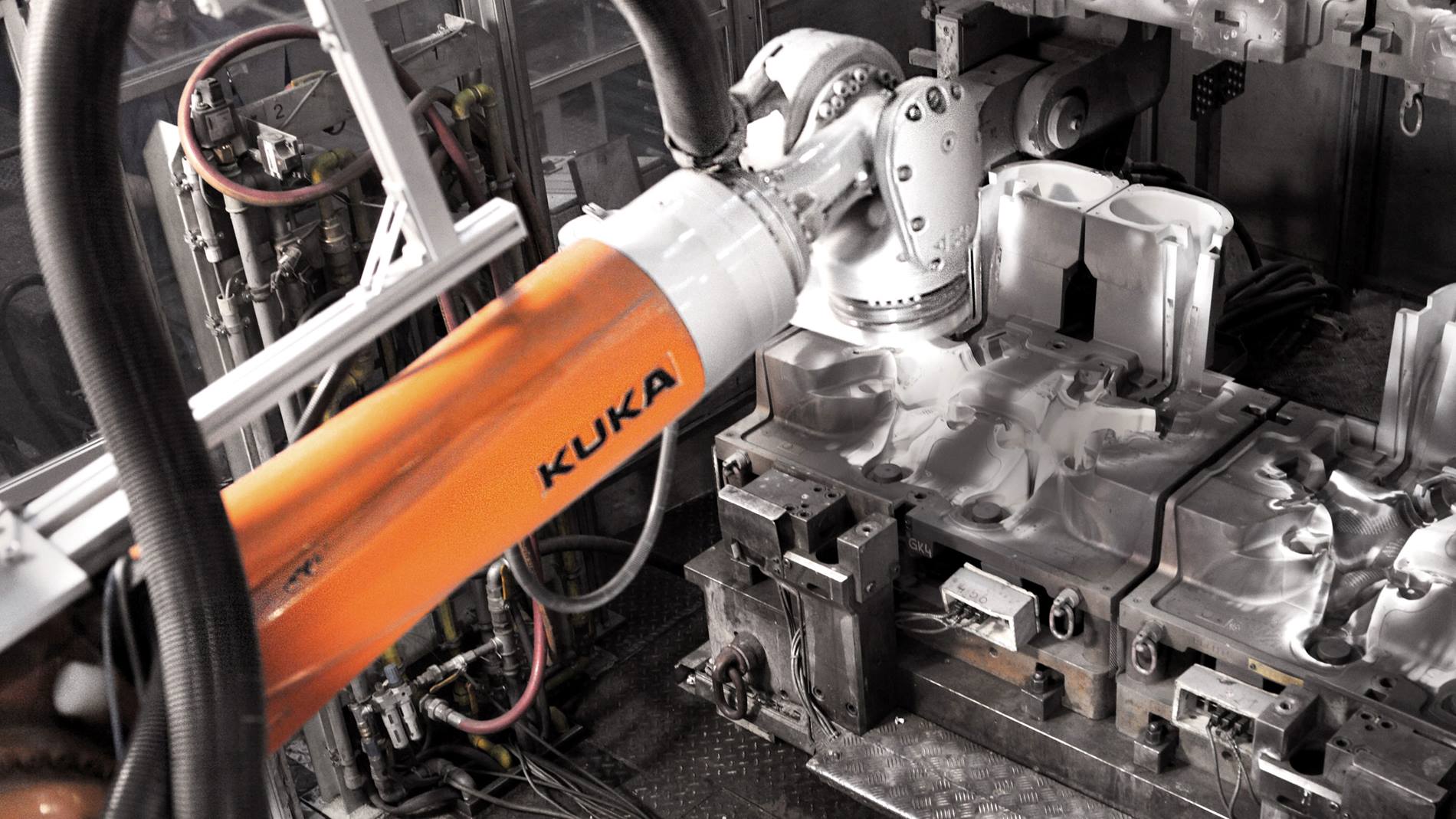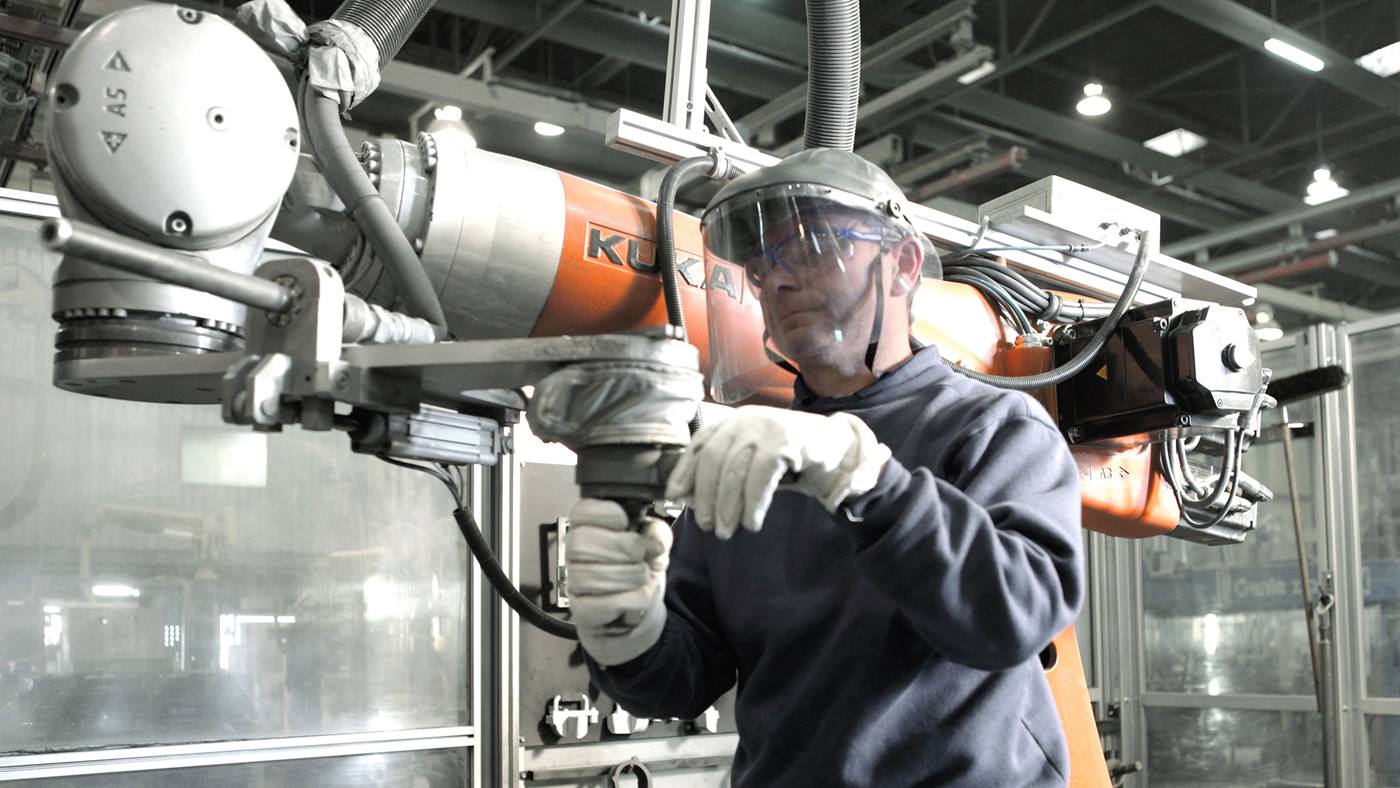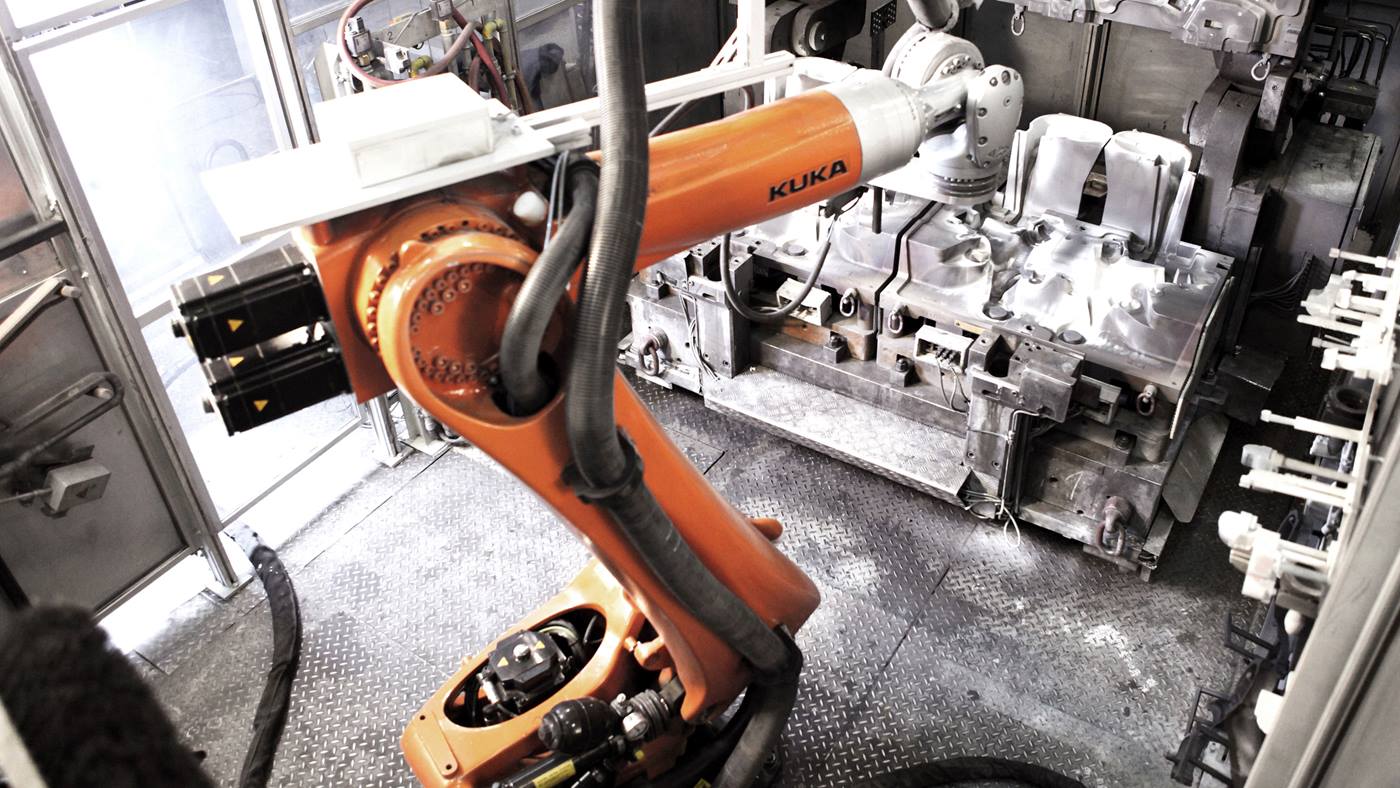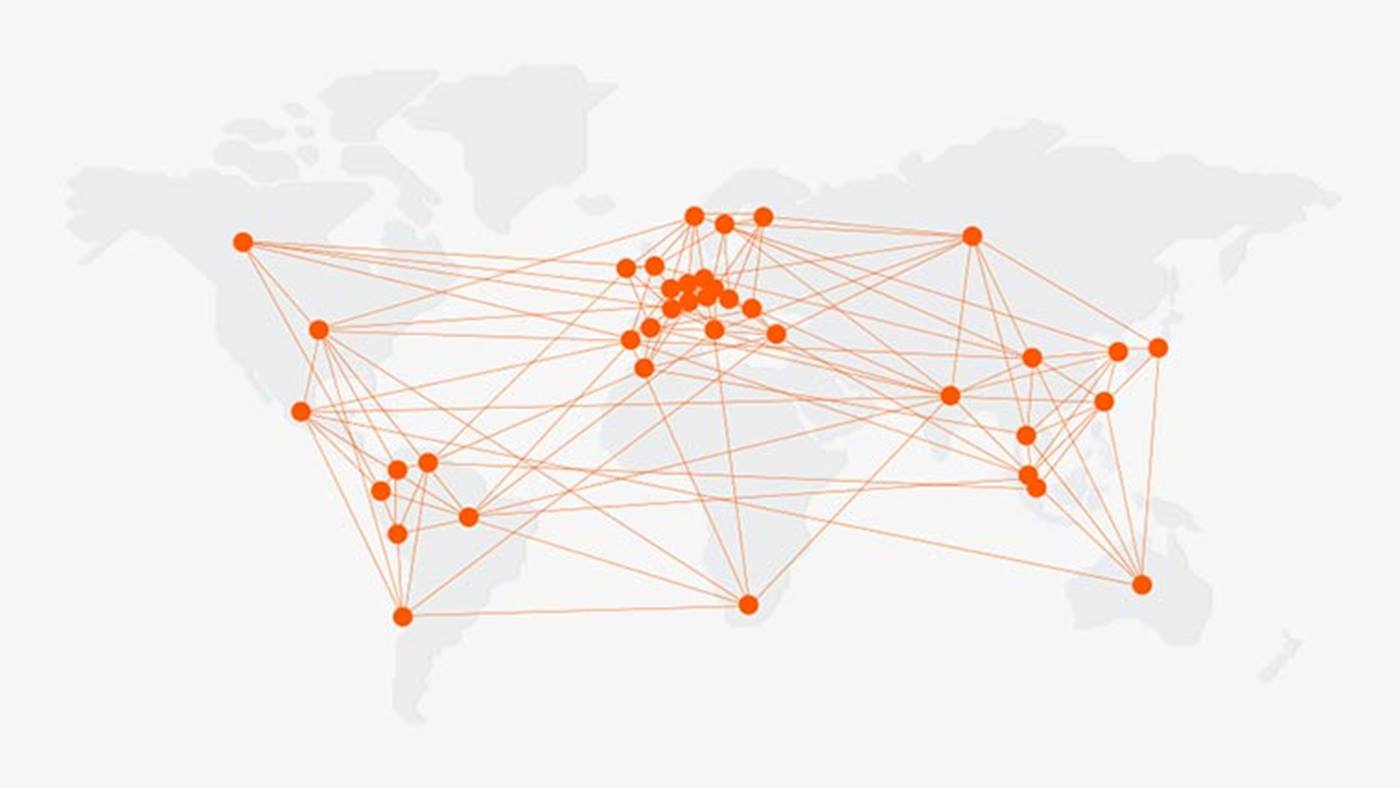Handling of dry ice places great strain on the worker
Dry ice is used to clean permanent molds in the foundry. The advantage of this non-abrasive and non-corrosive cleaning procedure is that it neither damages the material to be cleaned nor does it leave behind dry ice residue. With dry ice (solid CO2), the most complex geometries, as are often found on permanent molds, can be cleaned without damaging or dismantling equipment. At BMW in Landshut, this was previously done manually, placing a great strain on the worker.
Robotic assistence improves work place ergonomics
The worker first selects the “SmartICE” software on the KUKA smartPad teach pendant and from there uses the graphics to select the type of permanent mold as well as the relevant areas on the casting mold. The worker then manually guides the robot intuitively through these areas. With the aid of the force/torque sensor, the robot can be easily moved without process forces. This offers primarilyergonomic advantages when compared to the manual procedure. In addition, peripheral signals (e.g. to the actuators or from/to the dry ice aggregate through the Aero interface) can be easily saved in the program by the operator via touch operation. The worker then gets the robot to automatically execute the taught 3D path and clean the permanent mold with the dry ice. Following the ice blasting procedure, which lasts approximately 30 minutes, the permanent mold is reintroduced into the casting production process and a new casting mold is brought into the station to be cleaned.




